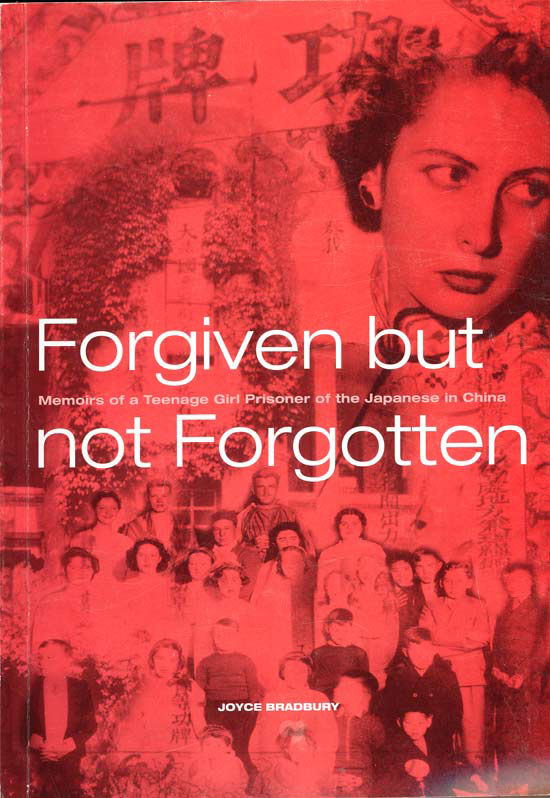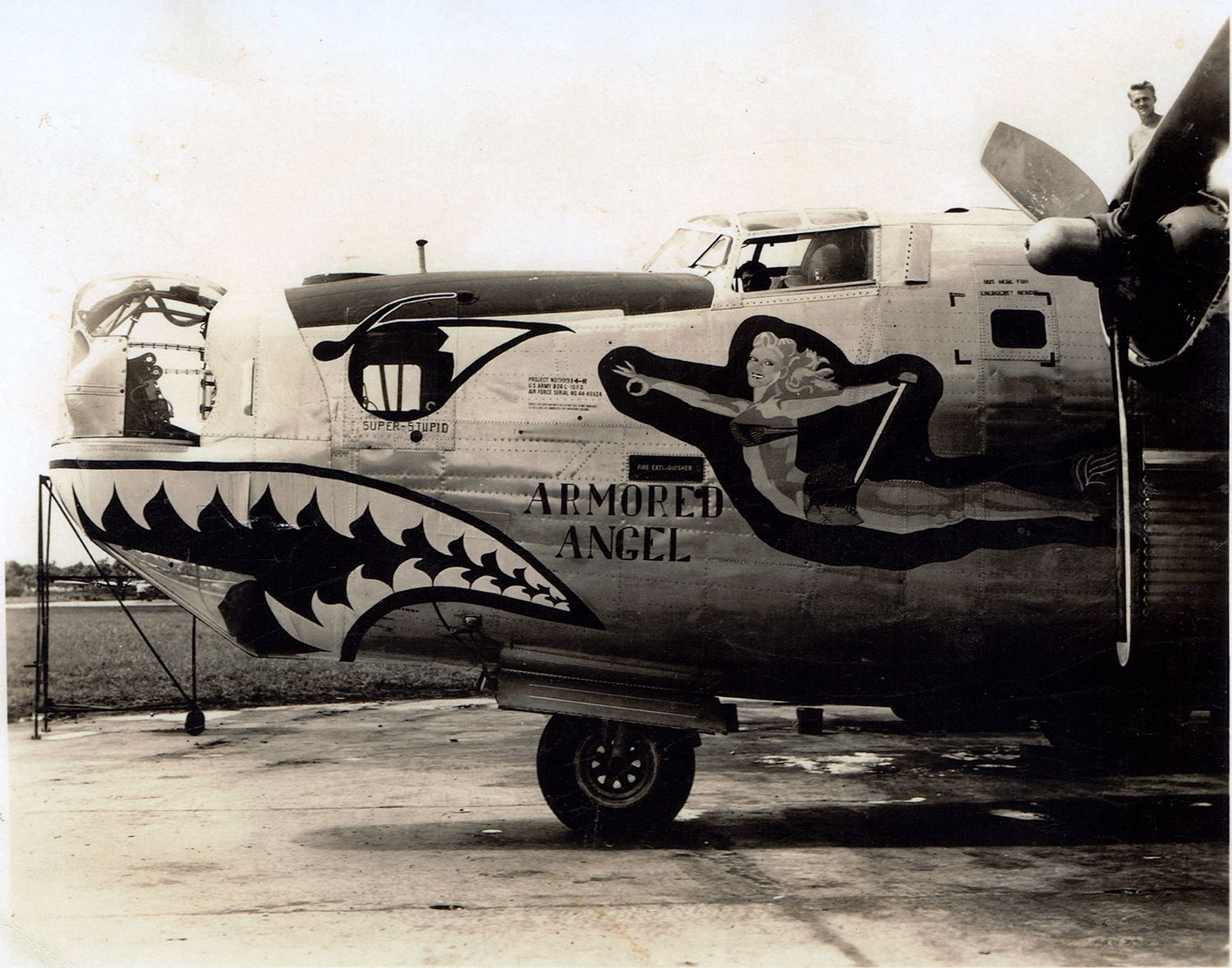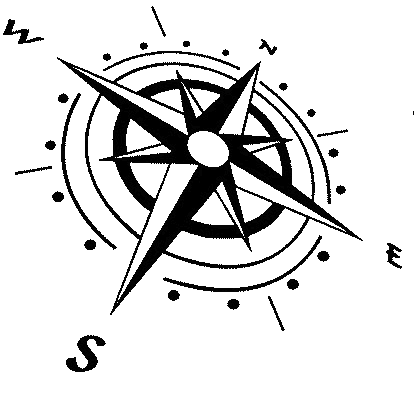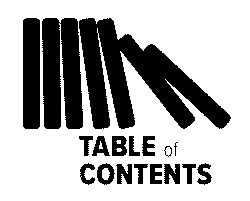
- by Joyce Bradbury, née Cooke
[Excerpts] ...
[...]
 The one morning that will always remain in my memory was the morning I heard the sound of aeroplane engines and Pop calling out to my mother:
“Vera, Vera, come quick. Look, look, they’re dropping something.”
The one morning that will always remain in my memory was the morning I heard the sound of aeroplane engines and Pop calling out to my mother:
“Vera, Vera, come quick. Look, look, they’re dropping something.”
We ran outside and saw an aeroplane flying overhead. It was lower than any aeroplane we had seen before. This was something completely new for us. Although we had seen tiny dots high in the sky several times before we had never seen an aircraft so close.
August 17, 1945, was a clear day at Wei-Hsien. From the low-flying aeroplane, I suddenly saw objects dropping and parachutes opening. My father called out:
“Oh look, they’re dropping food or something for us.”
We watched with amazement. Then Pop said: “Oh, they’re men. They’re moving. Look at their legs. They’re men.”
The first wave of parachutists landed at 10.15 a.m. on August 17, 1945. The time and date were recorded by one of the parachutists in my autograph book.
We all realised that something big was happening and we ran past the church towards the camp’s entrance. Many ran out the camp’s gates but I didn’t. To be honest, I was frightened of the Japanese guards there. The guards stood at their posts. They were looking at the parachutes too.
They seemed stunned and taken completely by surprise. Many of our young men ran right past them and the guards did not try to stop them.
Everybody was calling out: “What’s happening? What’s happening?”
The parachutists landed just outside the compound. I ran full pelt up to the gate to see what was happening.
At the gate, I saw these armed and uniformed parachutists being carried shoulder-high by the inmates into the camp. As the parachutists were carried to the gate, I realised they were American.
One of them was a Japanese-American named Tad Nagaki. He went up to a bewildered gate guard, slapped him on the back, and said:
“Now, what do you think of your Nagasaki?”
The Japanese guard stood there dumbfounded.
Understandably, we did not know anything about Nagasaki, one of two Japanese cities which were targeted with US atomic bombs in August 1945. I wonder now whether the confronted Japanese guard knew anything of the atomic bomb attack on Nagasaki.
From the camp entrance, the American soldiers led by Major Stanley Staiger then walked towards the Japanese officers’ quarters. Some guards ran toward the quarters but they did not try to stop the Americans. The guards then abandoned their positions at the gate. There was a big commotion as the camp inmates realised their imprisonment was ending.
Everybody was unbelievably excited.
At the officers’ quarters, Major Staiger walked with two Japanese guards to the commandant’s quarters. The Japanese commander met Major Staiger and quickly surrendered his sword to him.
Overhead, the B-24 US aeroplane from which the US soldiers parachuted kept flying around in circles. The aeroplane flew so low I could see its name, The Armored Angel, and a painting of a glamour girl in a two-piece costume on the fuselage.
 A short time after the Japanese commander’s surrender, a canister was dropped from the aeroplane. The canister contained supplies for the parachutists. It wasn’t long before other American aeroplanes came and dropped many canisters together with leaflets warning us not to overeat.
A short time after the Japanese commander’s surrender, a canister was dropped from the aeroplane. The canister contained supplies for the parachutists. It wasn’t long before other American aeroplanes came and dropped many canisters together with leaflets warning us not to overeat.
[excerpt]
During this period, Tsolik Baliantz and I got hold of some parachute material which was pure silk and extremely strong. She made me two blouses and a skirt from the material. One white blouse and one red skirt and blouse. She used one of the camp’s portable sewing machines that my mother had used earlier to make me a pair of shorts and a top out of an old dress.
After liberation, every family was issued with cartons of tinned food from the canisters. There was no necessity to cook ― everything was prepared. Cheese, butter, jam, corned beef, tongue, Spam (a brand of canned processed luncheon meat) and chipolata sausages. They were all packed in khaki-green coloured cans. There were also biscuits that the American soldiers called dog biscuits. The Americans didn’t forget anything in their food parcels. The parcels even had little can openers. Among the parcels came plenty of cigarettes. So mum, and I think my father, took up smoking again.
[further reading]
http://www.weihsien-paintings.org/books/ForgivenForgotten/Book/ForgivenNotForgotten(WEB).pdf
#








